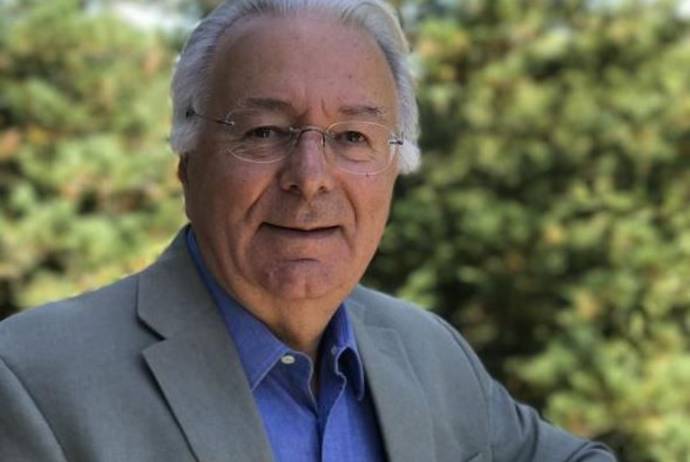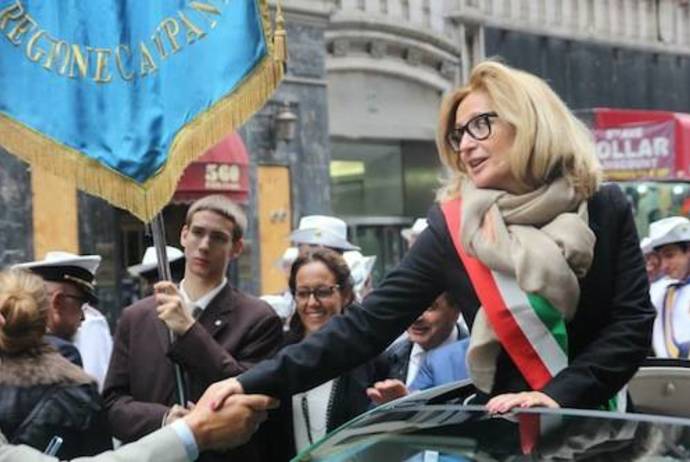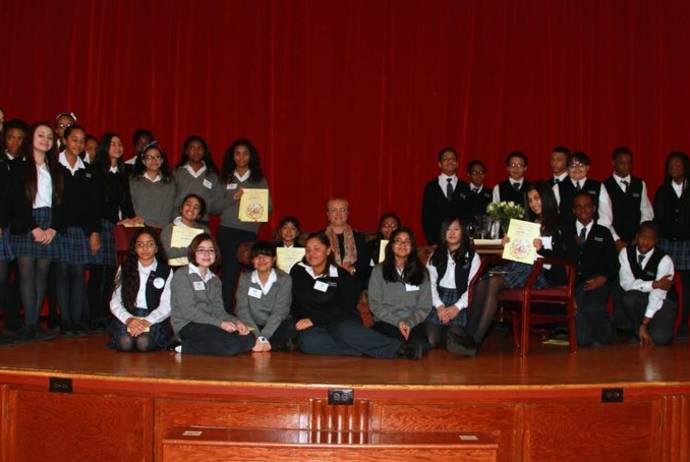Federico Faggin è uno dei più grandi inventori dell’ultimo secolo – così lo definiscono gli storici della Silicon Valley, fra cui Michael Malone, autore del libro “The Intel Trinity” -, perché disegnando l’Intel 4004 ovvero “il computer su un chip” ha avviato la rivoluzione digitale che ha cambiato la nostra vita.
I microchip discendenti da Intel 4004 sono infatti il “cervello” grazie a cui lo smartphone che teniamo nel palmo della mano è più potente e meno caro dei vecchi, giganteschi computer; e sono presenti in mille altri apparecchi “intelligenti” dei quali non possiamo più fare a meno.
Faggin e’ stato il secondo ospite della serie “Italian Creators of our Time”, il programma di conversazioni condotto dalla giornalista e autrice Maria Teresa Cometto all’Istituto italiano di cultura di New York. Prossimamente uscirà in Italia l’autobiografia di Faggin (Mondadori editore) e lui ha anticipato il racconto di alcune tappe fondamentali della sua vita durante l’incontro, che si e’ tenuto la sera del 21 febbraio scorso.
Gli inizi
“Mi sono appassionato alla tecnologia guardando volare un modellino di aeroplano - ha ricordato Faggin -. Avevo 11 anni e stavo giocando in un campo a Vicenza, la mia città natale, quando ho visto un ventenne che faceva volare un aeroplanino. Sono rimasto stupefatto a vedere che puoi costruire un giocattolo capace di volare".
"Tornato a casa, ho cercato di farmelo da solo: l’ho progettato, ho comprato i materiali, l’ho fabbricato e infine lanciato. Un flop: l’aereo non si e’ alzato da terra. Dopo altri tentativi fallimentari, ho capito che dovevo studiare: ho comprato un libro sui modelli di aeroplani, ho seguito le istruzioni e alla fine sono riuscito a far volare il mio apparecchio”.
“Da allora ho sempre desiderato costruire cose - ha continuato Faggin -. Per questo, contro il desiderio di mio padre professore di filosofia, non sono andato al liceo e invece ho scelto di frequentare l'Istituto Tecnico Industriale Statale di Vicenza per diventare perito industriale”.
L'esperienza alla Olivetti
Appena diplomato, Faggin ha trovato lavoro all’Olivetti, nel laboratorio di ricerca & sviluppo (R&D) sull’elettronica a Borgolombardo (Milano). Lì, a 19 anni, ha disegnato e costruito da solo un computer. Ma ha anche capito che il diploma da perito non bastava: per costruirsi le fondamenta teoriche necessarie nel mondo dell’elettronica si e’ iscritto a Fisica, all’Università di Padova, laureandosi “summa cum laude” nel 1965.
Per un anno ha poi insegnato Elettronica nella stessa università. “Ma la vita accademica era troppo lenta per me!”, ha spiegato Faggin.
E cosi’ a metà del ’66 ha lasciato l’accademia per l’industria, andando a lavorare in una startup, fondata dal suo ex boss all’Olivetti e rappresentante in Italia di GMe, General Micro electronics. Da li’ e’ passato alla attuale STMicroelectronics ad Agrate Brianza e nel febbraio ’68 si e’ trasferito a Palo Alto nel laboratorio di ricerca di Fairchild, l’azienda “madre” della Silicon Valley.
Il trasferimento in Usa
Alla Fairchild Faggin ha inventato la Silicon Gate Technology (“tecnica della porta al silicio auto-allineante”), che per la prima volta al mondo usava come conduttore il silicio policristallino drogato anziché l’alluminio, per fabbricare circuiti integrati, rendendoli più piccoli ed efficienti.
Ma anche Fairchild non era abbastanza pronta e veloce a sfruttare le invenzioni di Faggin, che nel ’70 e’ passato a Intel, oggi un gigante dei semiconduttori, ma all’epoca solo ai primi passi. E’ li che ha creato il primo microprocessore, l’Intel 4004: grande 3x4 millimetri quadrati, offriva una potenza di calcolo superiore a quella dello storico ENIAC, il primo calcolatore elettronico al mondo costruito nel 1946, che occupava lo spazio di un largo appartamento.
I dirigenti di Intel pero’ non avevano capito subito la portata della novità del microprocessore. “Dopo qualche anno mi sono stufato di tutto il tempo ed energia che sprecavo a convincerli delle sue potenzialità e nel ’74 me ne sono andato per fondare la mia prima startup - ha raccontato Faggin -. Il fatto e’ che l’ambiente migliore per innovare e’ proprio quello di una startup. Non a caso le grandi aziende comprano le startup per acquisirne le nuove tecnologie”.
Quindi il suo consiglio ai giovani che hanno nuove idee e voglia di fare e’ di fondare la propria startup; andare nella Silicon Valley a vedere come si fa, come funziona il suo ecosistema e’ ancora una esperienza utile per tutti, anche per i giovani italiani.
Una nuova sfida: lo studio scientifico della coscienza
Di startup Faggin ne ha fondate tre e ne ha gestita un’altra. Ora, da qualche anno si sta dedicando con la sua Fondazione lo studio della consapevolezza: “Quella capacità umana, ma anche animale e di tutti gli esseri viventi, di avere sensazioni - ha spiegato Faggin -. È una proprietà fondamentale della natura non ancora apprezzata abbastanza dalla scienza.
"Ci hanno abituato a pensare che siamo solo macchine. Non sono d'accordo. L'uomo ha immaginazione, intuizione, fantasia: l'idea che le macchine possano riprodurre queste facoltà è fasulla. Le macchine sono una forma di schiavitù se non sono domate. L'uomo deve capirlo se vuole riprendersi il futuro”.
“Le macchine/i robot funzionanti con l’Intelligenza artificiale (Ai, Artificial intelligence) possono imitare gli esseri umani - ha aggiunto Faggin -. Possono processare le informazioni ricevute, trovare correlazioni sulla base degli esempi loro forniti, ma non possono capire, interpretare le informazioni come solo noi siamo capaci di fare”.
La discussione su questi temi e’ stata molto vivace, con Faggin che ha spiegato come la sua idea di consapevolezza si collega ai principi della fisica quantistica e vuole risolvere la classica dicotomia materia-spirito proponendo una unita’ olistica fra i due aspetti della natura di cui e’ fatto l’universo. Per saperne di più: www.fagginfoundation.org
Il prossimo appuntamento della serie “Italian Creators of our Time” sarà il 28 marzo con Brian Pallas, fondatore della piattaforma digitale Opportunity Network, “la Facebook degli imprenditori”.





































